Abe Monjuin Temple
The Buddha of Wisdom
Abe Monjuin Temple, founded in 645, is one of the oldest Buddhist temples in Japan.
The main deity of Abe Monjuin Temple is Monju Bosatsu, who is also famous for the saying, “When three people gather, Monju's wisdom comes with them.” The statue of Tokai Monju, accompanied by four assistants, was built by Buddhist monk Kaikei during the Kamakura period.
The statue represents a scene of his embarking on a journey of preaching to dispel the demons of sentient beings and to bestow wisdom.
It is designated as a National Treasure.
The temple is widely known as a sacred place of Monju worship where many people from children to adults visit to receive wisdom.
It is also a temple associated with Abe Seimei, and is believed by many to be a sacred place to ward off evil spirits and prevent calamities.
HIGHLIGHTS
-
National Treasure
Tokai Monju Bosatsu
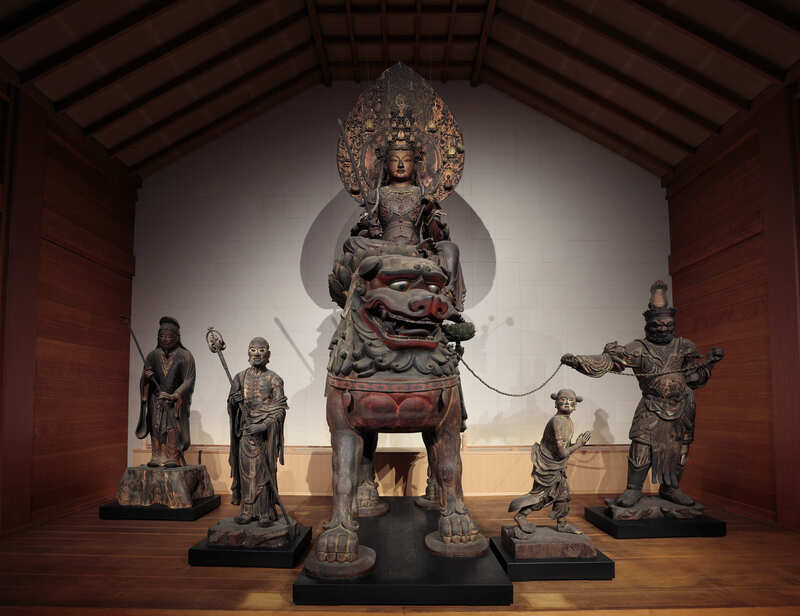
Tokai Monju BosatsuNational Treasure
The statue was built by Buddhist sculptor, Kaikei, in the Kamakura period (1203).
Having the Monju Bosatsu riding on a lion on the center, four assistants are around: the image of Yuimakoji (Saisho Rojin) and Shubodai (Butsudabari Sanzo) are on the left, and Uten-o holding the lion's reins on the right, and Zenzai Doji who is leading the group.
They are on a journey across the sea of clouds, preaching to dispel demons and bestow wisdom.
All five statues have been designated as National Treasures.
The statues are deeply worshipped for prayers for wisdom, protection from evil, and protection from misfortune.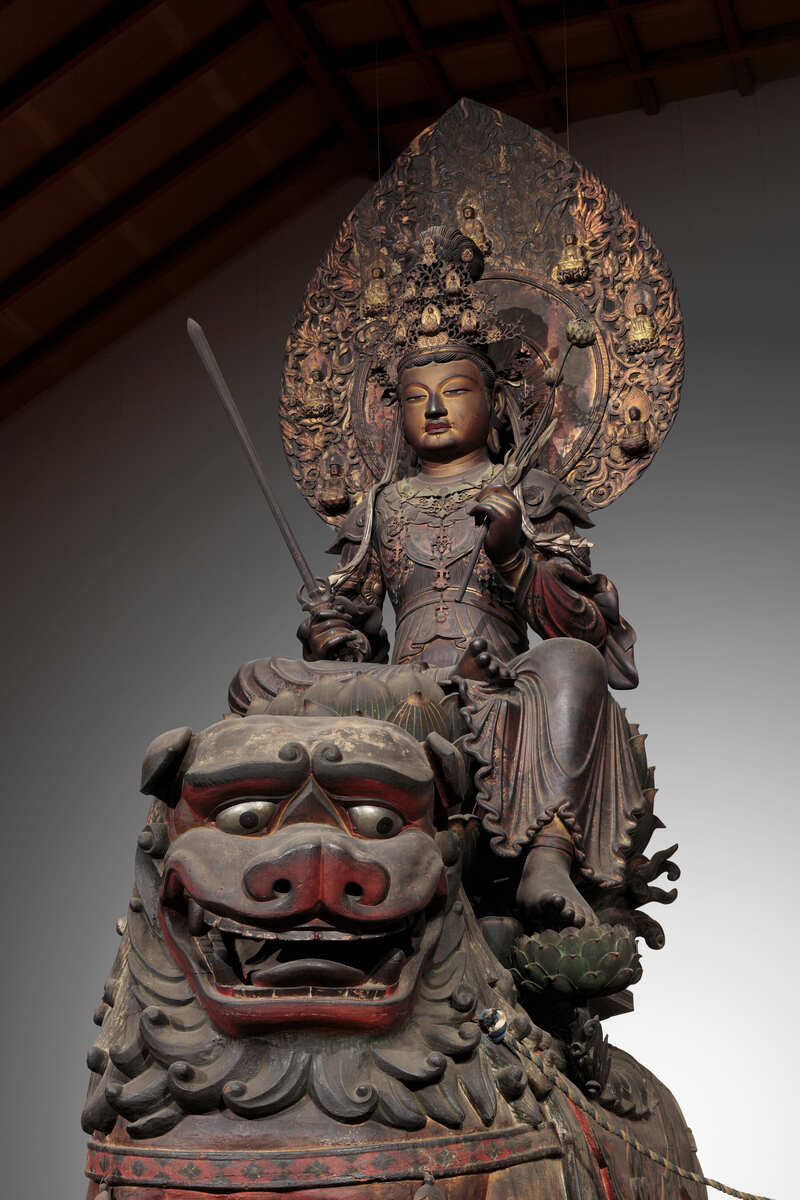
Kishi Monju Bosatsu
(Monjyu Bosatsu Riding a Lion)
National TreasureMonju Bosatsu (Manjusri) is seated on a lion, holding in his left hand a lotus flower symbolizing compassion and love, and in his right hand a sword with the mysterious power.
According to an inscription inside the body of Monju Bosatsu, it has been revealed that the statue was produced by the great Buddhist sculptor, Kaikei, in 1203.
The carved wooden statue of Monju Bosatsu on the lion in extreme colors is approximately 7 meters high, making it the largest in Japan. -
National Treasure
Zenzai Doji
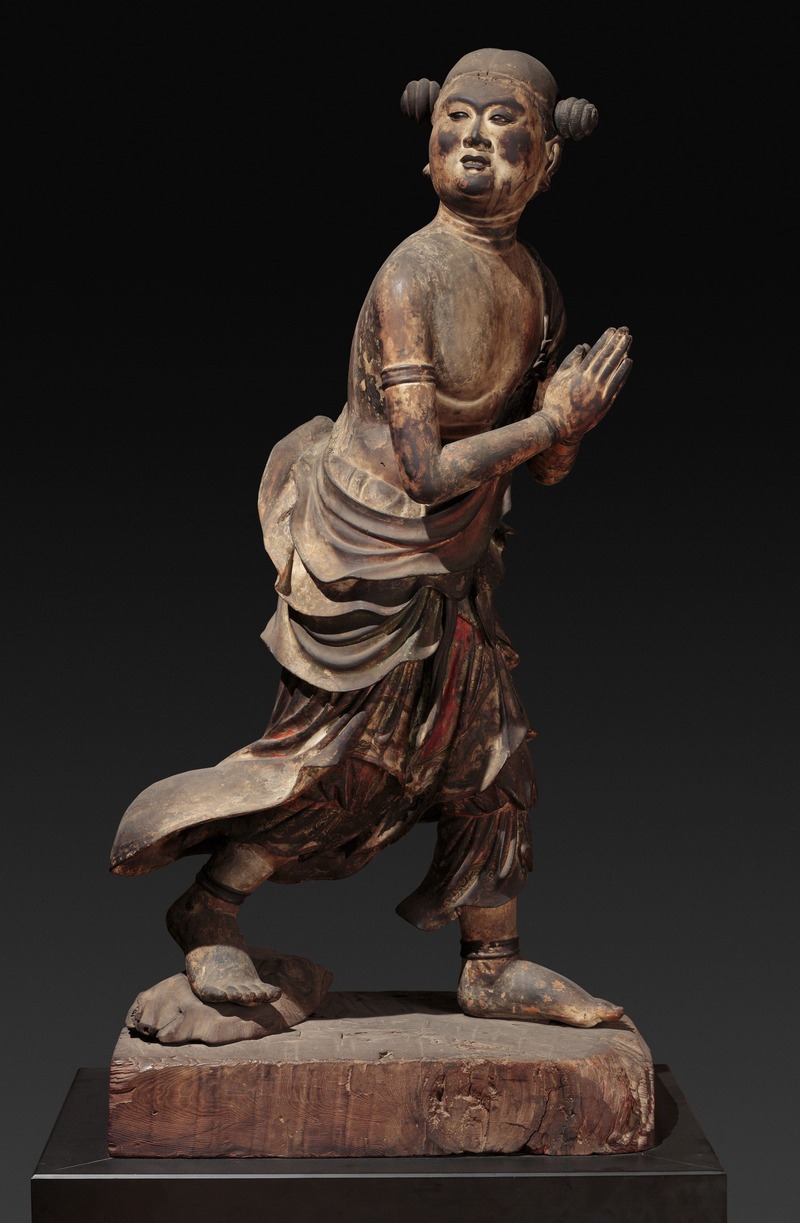
Zenzai DojiNational Treasure
Zenzai Doji / National Treasure
Zenzai Doji is a pure and innocent child who stands to the right of Monju Bosatsu.
He appears in the "Inclusion of the Buddha Realm" chapter of the Avatamsaka Sutra.
He is known for traveling to 53 wise teachers to receive Monju Bosatsu’s teachings and achieve enlightenment.
In the group of Tokai Monju statues, he leads the group and faces forward, but he was said to have been called back by Monju Bosatsu and seen looking back at him in the original form. -
Kinkaku Ukimi-do Hall /
Shichi Mairi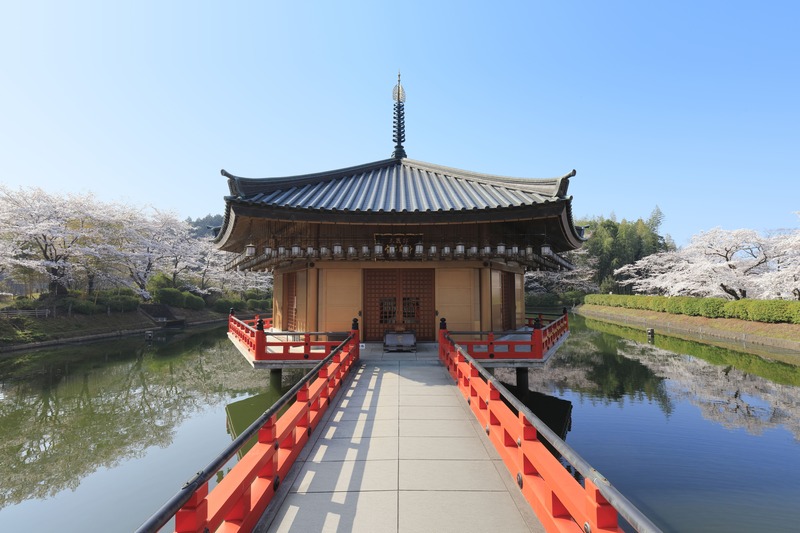
Kinkaku Ukimi-do Hall
The Kinkaku Ukimi-do or Reihokan is the place which enshrines Benzaiten (Yamato Seven Deities of Good Luck), statues of Abe Nakamaro and Abe Seimei, treasures related to Onmyodo (Way of Yin and Yang).
On the six walls inside the hall are displayed the scrolls depicting the Twelve Deities of Heaven (Muromachi period).
The Twelve Deities are the guardian deities of the four directions (east, west, south, and north), the eight directions of the four corners (northeast, southeast, northwest, and southwest), heaven and earth, the sun and moon.
The scrolls are open to the public during the special opening period in each season.Shichi Mairi
This hall is the site of the "Shichi Mairi," a prayer practice in which people pray for protection from evil and misfortune.
Since ancient times, it has been said that we will have seven unexpected disasters in our lifetime.
In order to avoid these seven misfortunes, people go around the hall where the deities and Buddha are enshrined to ward off evil and misfortune in any direction, such as when traveling, changing jobs, or moving house.
They go around the hall seven times while offering an osame-fuda, a talisman to ward off evil and misfortune.
This is a way of praying to remove the seven misfortunes and to obtain blessings inside the hall. -
Statue of Benzaiten
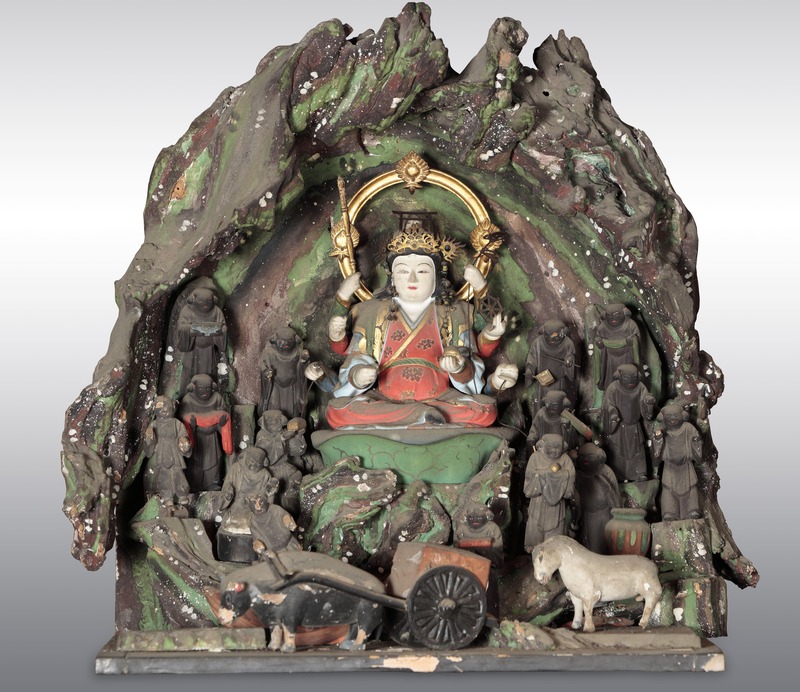
Statue of Benzaiten
Statue of Benzaiten / Muromachi Period / Yamato Seven Deities of Good Luck
This is a Buddha who drives away misfortune and brings much good fortune.
It is the Benzaiten of the Yamato Seven Deities of Good Luck.
This figure of Benzaiten is called Happi Benten, as it has eight arms and is accompanied by fifteen children as Confucian priests, which is a traditional Shingon esoteric Buddhism figure. -
Statue of Abe Nakamaro
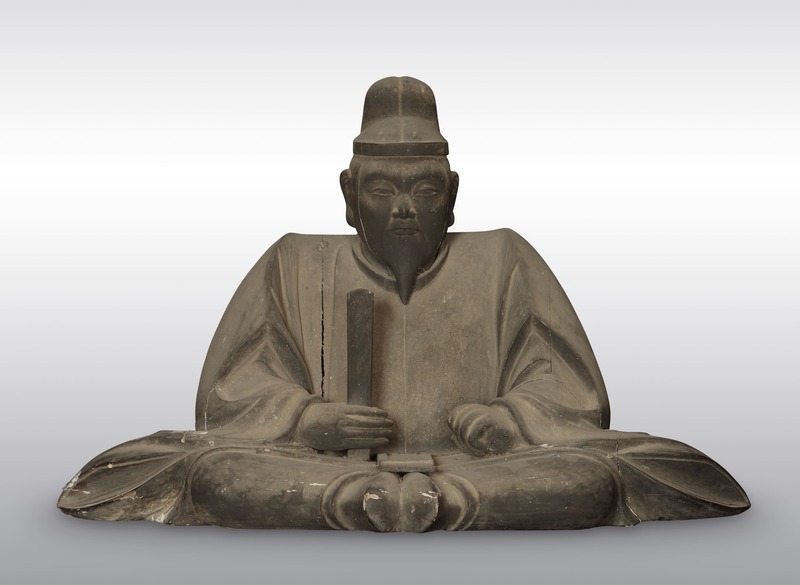
Statue of Abe Nakamaro
Statue of Abe Nakamaro / Muromachi Period
Abe Nakamaro was a Japanese bureaucrat of the Nara period who is said to have been born at this temple.
He traveled to China as an envoy to the Tang Dynasty and served under the Emperor Xuanzong after passing the extremely difficult imperial examination.
It is said that Nakamaro's residence was located next to the present site of Abe Temple, and a seated statue of Abe Nakamaro, which has been enshrined since the Muromachi period, is now enshrined in the Kinkaku Ukimi-do Hall. -
Statue of Abe Seimei
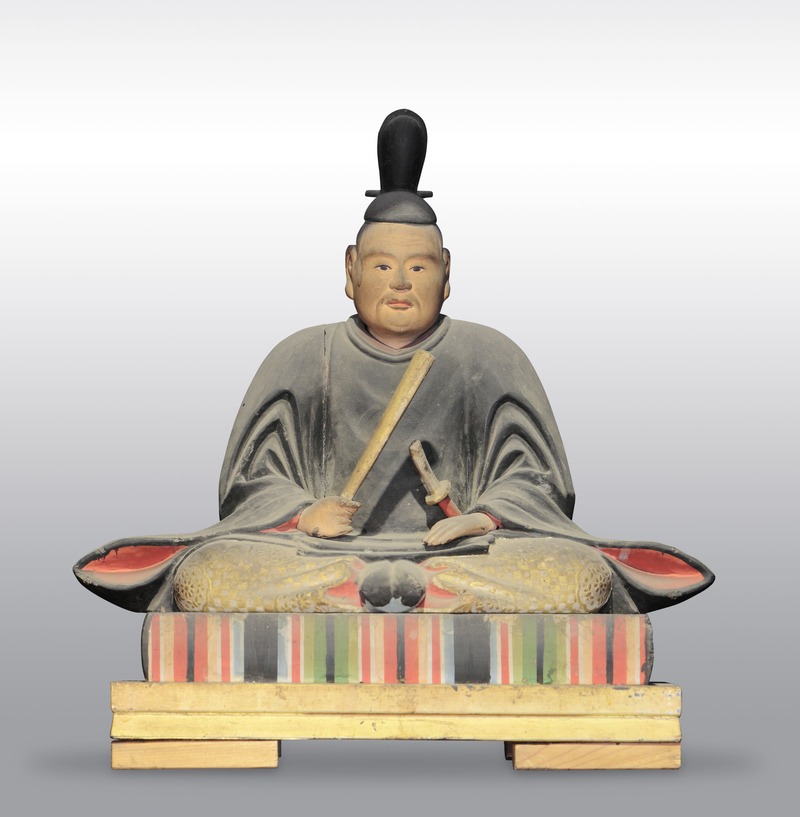
Statue of Abe Seimei
Statue of Abe Seimei / Muromachi Period
Abe Seimei was a Yin-Yang master who is said to have been born at this temple and made astronomical observations.
He is also known as the founder of Onmyo-do (Way of Yin-Yang).
Abe Monjuin Temple is one of the sacred places of worship of Abe Seimei as it serves as his family temple.
A statue of Abe Seimei has been enshrined as the main deity of Seimei Shrine since ancient times, and is currently enshrined in the Kinkaku Ukimi-do Hall. -
Hakusan-do Hall /
Abe Seimei-do Hall and Observatory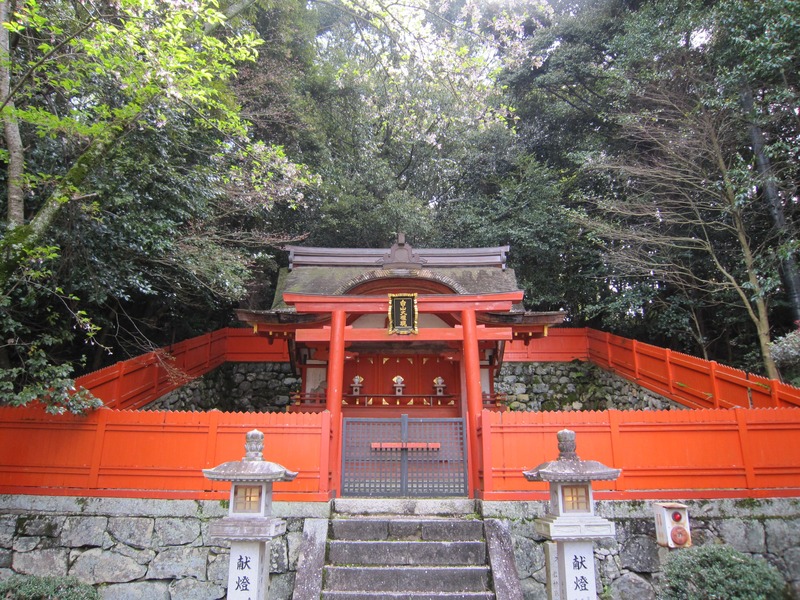
Hakusan-do Hall
Hakusan-do Hall / Muromachi Period
The architecture style is called a Nagare-zukuri which has shingled roof with a beautifully curved Kara-hafu (Chinese gable), and is designated as an Important Cultural Property.
The guardian deity of the temple enshrined here is Kukuri-hime-no Kami, the same deity as Shirayama-hime-no Kami which is enshrined at Hakusan Shrines throughout Japan.
A sub-shrine of Hakusan Shrine was constructed in the temple ground because Hakusan worship and the Yin-Yang have been deeply connected since ancient times.
According to the Nihon Shoki (Chronicles of Japan), Kikuri-hime-no Kami is the deity who brought Izanagi-no Mikoto and Izanami-no Mikoto together.
Since her name, "kukuri" has a same sound with the word meaning "tying up," the deity has long been worshipped as the deity of good matchmaking.
Visit the hall and pray for the fulfillment of a good meeting with people that brings people together.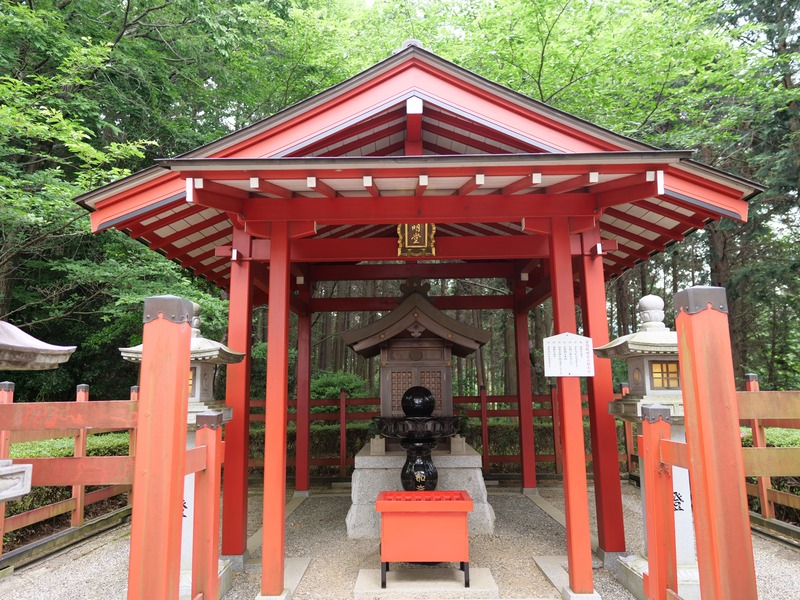
Abe Seimei-do Hall and Observatory
At Abe Seimei-do Hall, visitors can receive blessings for protection against evil directions.
It is said that Abe Seimei ascended this hill to practice astronomic observation at that time.
From the observatory, visitors can enjoy the changing seasons and a panoramic view of the three mountains of Nara (Mt. Unebi, Mt. Miminashi, and Mt. Amanokaguyama), the Fujiwara Palace Ruins, Mt. Nijo and Mt. Kongo.
In spring and autumn, the sun set view over Mt. Nijo is superb. -
Monjyuin Nishi-Kofun Mounds /
Special Historic Site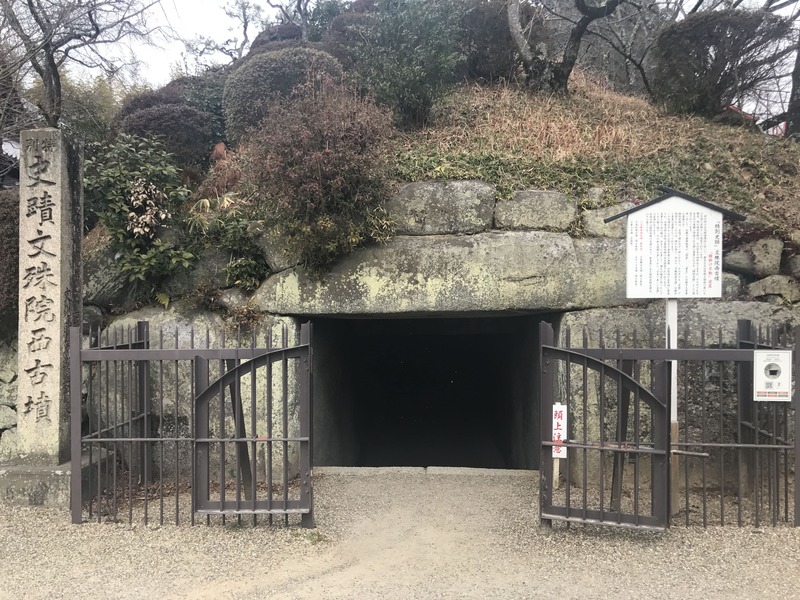
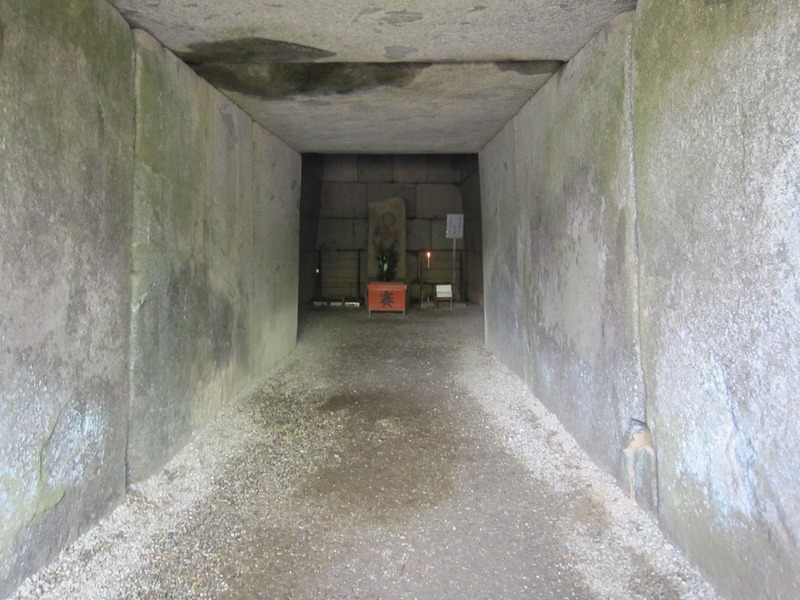
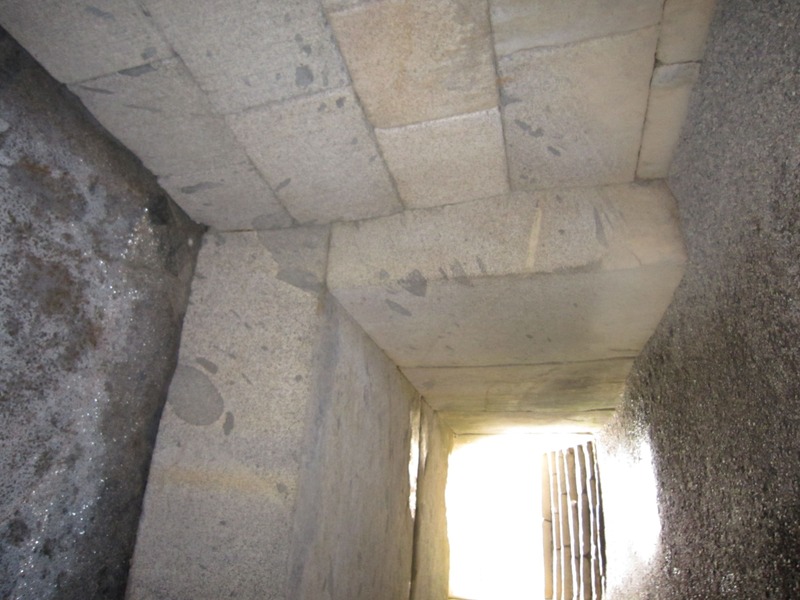
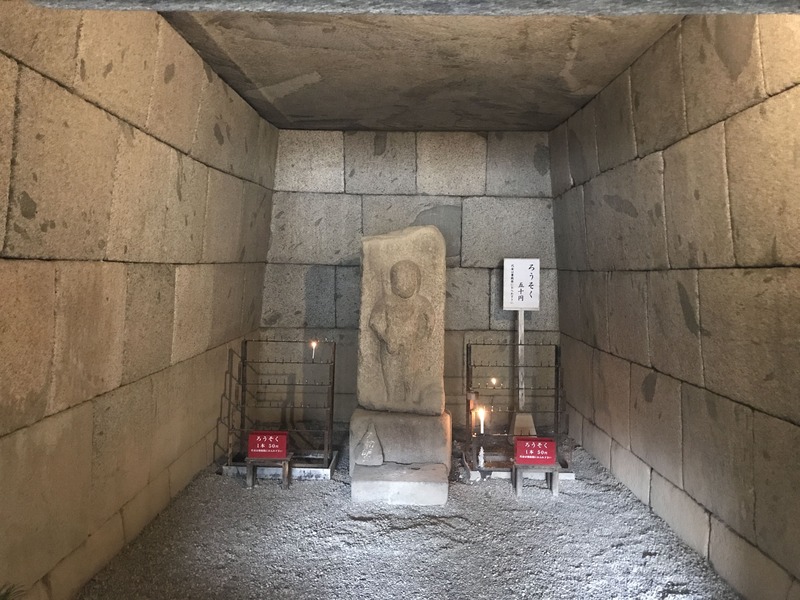
Monjyuin Nishi-Kofun Mounds
The West Tumulus (Nishi Kofun) was built in the Asuka Period.
It is designated as a "Special Historic Site," which is particularly important among the nationally designated historic sites.
There are only a few tumulus in Japan that have been designated as Special Historic Sites, and there are two such tumulus in the precincts of the temple along with the Ishibutai Tumulus, Kitora Tumulus and Takamatsuzuka Tumulus in the Asuka area.
The interior of the West Tumulus is preserved as it was originally made in 645.
High-quality granites are used and the masonry is symmetrical.
The ceiling rock of the chamber is a single piece of stone, 15 square meters in size, with the central part cut into an arch shape.
The interior of the burial mound has a reputation for being the most beautifully crafted in Japan.
Today, the deity which is said to have been made by Kobo Daishi is enshrined at this tumulus.
However, the tumulus is said to have originally made to be the grave of Abe Kurahashinomaro, who founded the temple and became the first Minister of the Left in 645. -
Adorable Sakura Cherry Blossoms
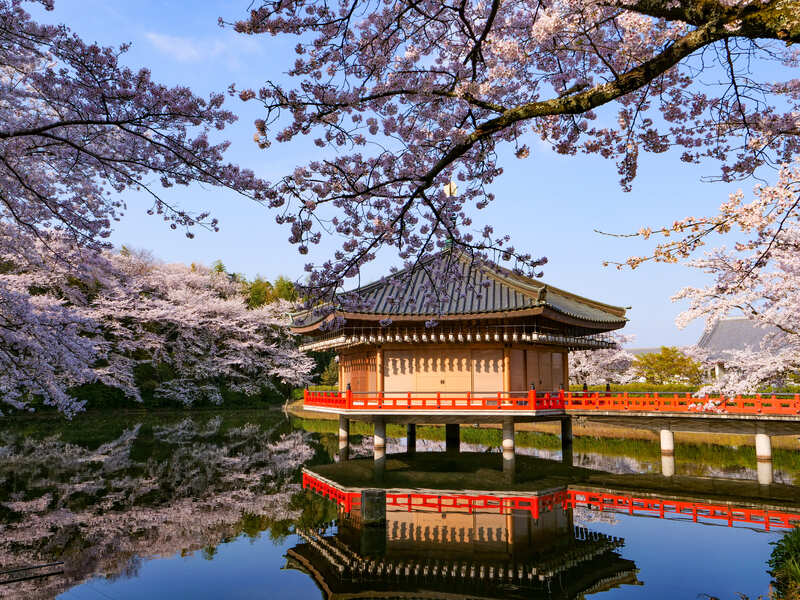
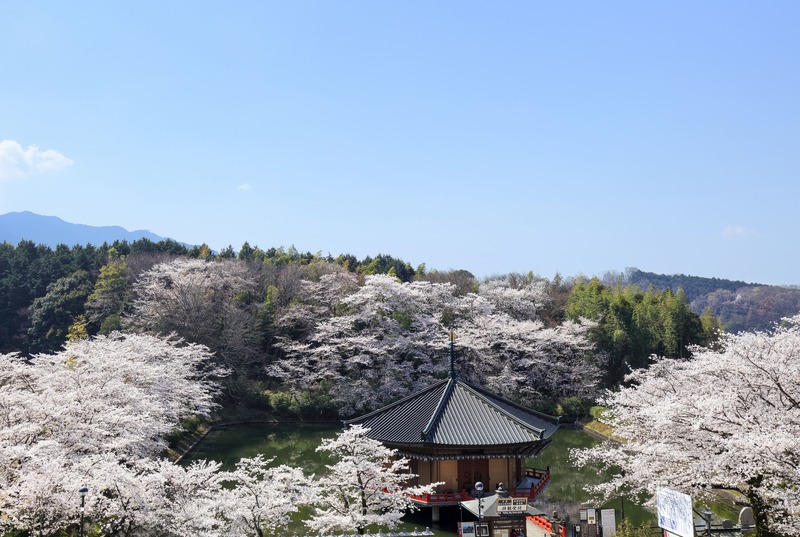
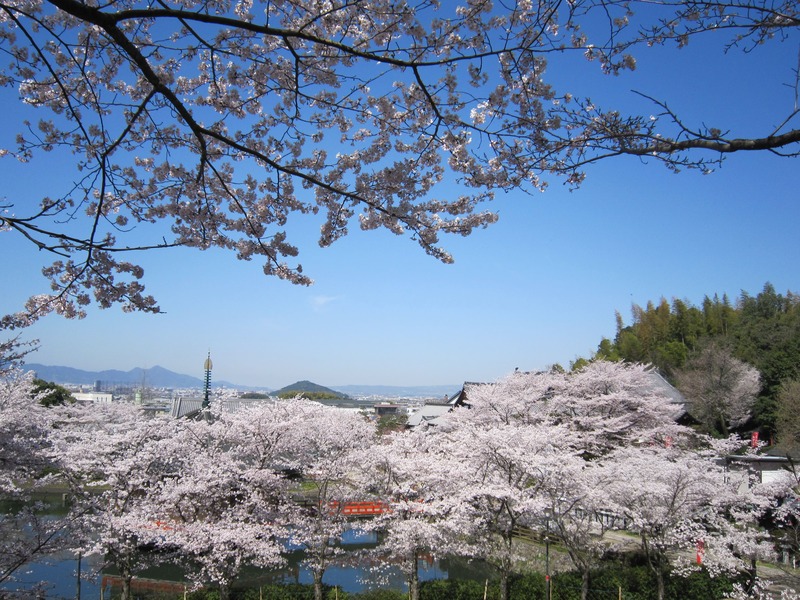
Adorable Sakura Cherry Blossoms
About 500 Somei Yoshino cherry trees adorn the precincts of the temple in spring.
The area around Monju Pond, where the Kinkaku Ukimido Hall stands, is filled with cherry blossoms.
The reflection of the blossoms on the surface of the pond is truly a magnificent view.
Best time to visit: Late March to mid-April
Cultural Assets
-
The Group of Tokai Monju (Bodhisattva Monju) <5 Statues>
- Kishi Monju Bosatsu (Bodhisattva Monju)
- Zenzai Doji
- Uten-o
- Shubodai (Butsudahari Sanzo)
- Yuimakoji (Saisho Rojin)- National Treasure (sculpture)
- Era
- Kamakura period (1203)
- Outline
- This group of Buddhist statues, “Tokai Monju (Bodhisattva Monju)” whose story was based on a legend about Monju Bosatsu (Bodhisattva Monju) set in the Five Sacred mountains in the ancient China, were created by Buddhist sculptor, Kaikei, in the Kamakura period (1185-1333). On the center stands the largest statue of Monju Bosatsu in Japan (approximately 7 meters high). During the Sengoku Period (1467-1568), the main hall of the temple was completely destroyed by fire when Matsunaga Danjo Hisahide attacked the temple, and the lion on which Monju Bosatsu rode and the statue of Saisho Rojin, one of the attendants of Monju Bosatsu, were burnt down. Later, the these statues were rebuilt by Soin, a famous Buddhist sculptor of the Azuchi-Momoyama period (1568-1603). A scroll and a scroll of the petition for the construction were found in the body of the statue at that time. As a result, together with the scrolls, the statues of Monju Bosatsu, Zenzai Doji, Uten-o, Subodhi, Shubodai, the lion with supplementary work, and Yuimakoji have all been designated as National Treasures.
Category -
Hakusan Shrine Main Hall
- Category
- Important Cultural Property (building structure)
- Era
- Late Muromachi period (1467-1572)
- Outline
- The main hall of Hakusan Shrine is located at the eastern end of the Monjuin Temple grounds, facing west. It is the Nagare-zukuri style of architecture with the Kokera-buki roof (a method of construction in which layers of wood shingles are layered on top of each other) of the beautiful curved figure. Because of the three-part wooden door at the front, the main shrine hall is recognized to have been built in the late Muromachi period.
-
West Tumulus of Monjuin Temple
- Category
- Special Historic Site
- Era
- Hakuho period (645)
- Outline
- Built in 645. The stone materials inside has remained original since the time the tumulus was built. The number of stones, which are processed granite, on the side walls are symmetrical, and the ceiling rock is a single monolith measuring approximately 15 square meters. The stone chamber is 12.5 m long. It is built of hewn stones of extremely fine workmanship, with precise and well-proportioned masonry.
Visitor’s Information / Access
| Open: |
Open: 9:00 a.m.-5:00 p.m. Prayer accepted: 9:00 a.m.-4:00 p.m. |
|---|---|
| Admission | [A] Main Hall (Statue of Monju Bosatsu; National Treasure) with a special gift Adults (junior high school students or older) 700 yen Elementary school students: 500 yen [B] Kinkaku Ukimido Hall Treasury House (with Osame-fuda and an amulet) Adults (junior high school students or older) 700 yen Elementary school students: 500 yen [A]+[B] Combination ticket with special gift (with Osame-fuda and an amulet) Adults (junior high school students or older) 1,200 yen Elementary school students: 800 yen |
| Address: | 645 Abe, Sakurai City, Nara |
| Access: |
By Train Nearest train station: Sakurai Station (Kintetsu or JR) A 20-min. walk from Sakurai Station, or a 7-min. by bus (get off at Abe Monjuin Stop) By Car Car parking with fee is available (capable of 200 vehicles and 20 large-size buses) From Osaka, take the last exit on the Minami Hanna Express Way From Nagoya, take the Hari IC on the Meihan Express Way From Kyoto, take the last exit on the Keinawa Express Way |